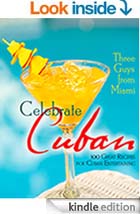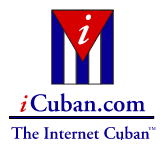Cuban Key West Travel Guide
Cubans have been living in Key West for more than 150 years.
Sure, it is a great place to party and for most tourists, Key West is all about Piña coladas and Jimmy Buffet. After a hot day in the sun in Key West, the cool evening brings the nightly sunset festival on Mallory pier and a mile-long block party along historic Duval Street. With sun, sand, and fishing in the daytime and a lively party scene at night, it is easy to forget the great Cuban heritage of Key West. Cubans have been living in Key West for more than 150 years.
Florida and the Keys have been forever connected to Spain. Even the name Key West is a transcription of the island's original Spanish name, "Cayo Hueso" so named for the human bones found in local Indian burial mounds. Early Spanish explorers led by Ponce de Leon came to Florida in 1513 and claimed it for the Spanish crown. Although France and England laid claim to it at varying times, Spain held Florida and the Keys through much of its colonial history until 1815 when Spain ceded Florida to the United States.
In the early 19th century, the business of Key West was wrecking and marine salvage. Shallow waters and the nearby coral reefs led to scores of offshore shipwrecks. Salvaging ships that had run aground became a profitable venture that employed hundreds of sailors recently arrived from New England states.
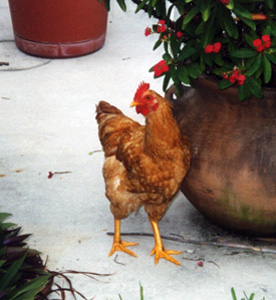
The start of Cuba's Ten-Year War for independence brought a large wave of Cuban immigrants to Key West. During this time, more than ten percent of the Cuban population fled the island for U. S. cities such as New York, Philadelphia, New Orleans, and Key West. Vicente Martinez Ybor, a Spaniard who supported the Cuban rebels, arrived in Key West in 1869 and established the first cigar factory. Key West proved to be ideal for cigar making. Much like Cuba, Key West has a perfect temperature and humidity that allows tobacco to remain pliable throughout the manufacturing process.
Cigar making proved to be a very profitable venture for factory owners and workers alike. Using tobacco shipped daily from Cuba by ship, skilled cigar makers could make as much as $50 per week. Within a few years, cigar making became even bigger than marine salvage. At its peak, Key West's cigar industry included more than 200 factories that produced over 100 million cigars per year.
The Key West Historic District or Old Town Key West includes more than 3,000 historic structures in a 200-block area that includes Key West's business district and about 30 percent of its housing.
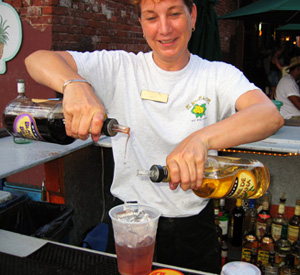
Admit it, when you think of Key West, you're probably thinking about something like this!
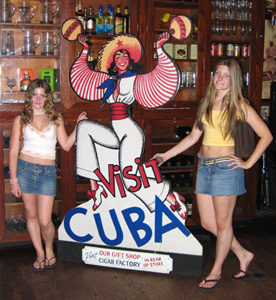
Three Guys From Miami Show You How to Make the Best Cuban, Spanish, and Latin American Food!
CHECK OUT THE RECIPES:
Drinks | Appetizers | Salads | Main Dishes
Soups | Side Dishes | Desserts | Index
The San Carlos Institute was the first desegregated school in Florida. Here Cuban children attended classes regardless of their race. As late as the 1950s, the land and building legally belonged to the Cuban Government. The developers brought in architect Francisco Centurion from Cuba to design this beautiful two-story building. The building is a Cuban baroque style, with typically Cuban elements including an arched arcade along the sidewalk and an overhanging balcony. Large French doors face the balcony and feature louvered shutters with stained glass fanlights on the top. Tall ceilings and marble checkerboard floors are all typical of late 19th and early 20th century Cuban architecture.
An interesting side note: After the school closed in the 1970's, vagrants set up camp in the deserted building and dozens of valuable artworks, books, and documents were lost. It looked as if the building had finally reached its end in 1981 when a large chunk of the building's exterior fell on a passing tourist. However, Florida's Hispanic Affairs Commission stepped in and led a six-year effort to restore the building to its former glory.
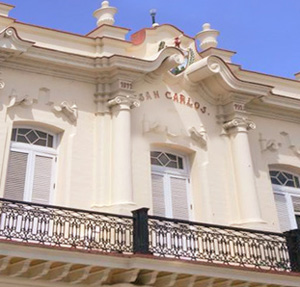
Walk along some of the byways to discover a side of Key West that has not changed much in 100 years. Along the 600 block of Elizabeth Street are shotgun-style houses that Cuban cigar workers once occupied. These simple, three-room Bahamas-style cottages are small and narrow, partially due to the lack of lumber, but mostly due to the slender lots made necessary by limited island space. The locals call these residences shotgun houses because one can reputably fire a shotgun in the front door and have the pellets exit the back door without hitting anything in between.
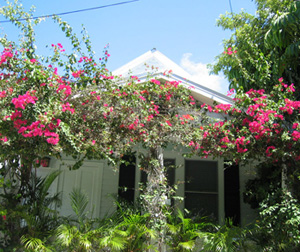
Continued on Next Page
Many Key West houses have front porches and shuttered windows to control sunlight and protect against storms. Several homes still have cisterns to capture rainwater, as there is no natural source of fresh water anywhere in the Keys. Some of these cigar maker's cottages have been converted into guesthouses and there is at least one example remaining on Duval Street. A one-story cottage is now the home of Cuba! Cuba!—a store that specializes in Cuban art and memorabilia.
One vibrant link to a Cuban past is Fausto's Food Palace, a Key West landmark that started life as a neighborhood grocery at Virginia and Packer Streets in 1926. Faustino Castillo arrived in Key West from Havana in 1910 to take a job at a local cigar factory. He and his wife turned a longing for Cuban food into a full-time business that catered to the tastes of Cuban immigrants. Fausto's offered a large selection of island comfort food like guava paste, mango jelly, farmer's cheese, and Spanish chorizo, plus all of the favorite tropical fruits shipped direct from Cuba and South America. Today, Fausto's has gone upscale, catering to more gourmet tastes, but still maintaining its local character.
In April of 1980, during the Mariel Boatlift, Key West became the focal point of what became a massive rescue effort. Florida Cubans, who had relatives back on the island, soon overwhelmed the public boat launch. Others came to Key West in cars and hired local charter fishing boats, shrimpers, and other vessels. In days, more than 1,200 vessels left Key West bound for the Cuban port city of Mariel. Days later, the first wave of returning boats arrived in the port. A large sign written in Spanish greeted the arriving masses. It read, "Could the last person to leave Cuba please turn out the lights?" For thousands of Marielitos, Key West was the first place they set foot on American soil.
Once a year the city celebrates its Cuban roots with the Cuban American Heritage Festival. Past events have included the "world's largest conga line" and other, less esoteric pursuits such as a progressive dinner and a big Latin street dance.
OUR COOKBOOKS ARE NOW AVAILABLE AS KINDLE EBOOKS!
This new Kindle version contains all of the recipes and editorial copy from the original print edition. As a bonus, the new Kindle edition includes 14 new photos of the prepared dishes.
No Kindle?
Use the FREE Kindle Reading App and view our cookbooks on your notepad, tablet, laptop, or computer.

Visit All of Our Sites:


